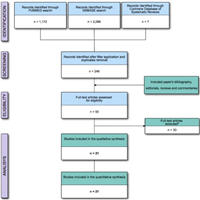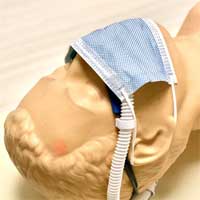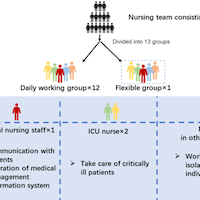Tag: strategy

Transfusion Strategies for Acute Upper Gastrointestinal Bleeding
As compared with a liberal transfusion strategy, a restrictive strategy significantly improved outcomes in patients with acute upper gastrointestinal bleeding. We enrolled 921 patients with severe acute upper gastrointestinal... read more

Association between perioperative fluid administration and postoperative outcomes
Irrespectively to the amount of perioperative fluid administered, goal-directed therapy (GDT) strategy reduces postoperative complications, but not perioperative mortality. The metanalysis included 21 RCTs enrolling 2,729... read more

Adverse Events in the ICU During Bed-Bath Procedures
Serious adverse events were observed in one-half of patients and concerned one-fifth of nurses, confirming the need for caution. Further studies are needed to test systematic serious adverse event prevention strategies. The... read more

Problems in care and avoidability of death after discharge from ICU
The proportion of deaths in hospital with some degree of avoidability is higher in patients discharged from an ICU than reported in hospital-wide populations. Extrapolating our findings suggests around 550 probably avoidable... read more

Development and assessment of the performance of a shared ventilatory system
Using standard clinical components, a system of shared ventilation consisting of two ventilatory limbs was assembled and connected to a single ventilator. Individual monitors for each circuit were developed using widely available... read more

Conservative or Liberal Oxygen Therapy in Adults After Cardiac Arrest
Conservative oxygen therapy was associated with a statistically significant reduction in mortality at last follow-up compared to liberal oxygen therapy but the certainty of available evidence was low or very low due to bias,... read more

COVID-19: Practical Strategies to Reduce Nosocomial Transmission
The frontline healthcare workers (HCWs) are at risk for contracting the COVID-19 disease when caring for patients and providing aerosol-generating procedures. Until further high-quality studies generate robust evidence, defining... read more

ECMO During the Coronavirus Disease 2019 Pandemic
In the midst of the 2009 influenza A H1N1 pandemic, clinicians turned to extracorporeal membrane oxygenation (ECMO) as a strategy to save lives. Based on the H1N1 experience, and the ECMO to Rescue Lung Injury in Severe... read more

The Application of 6S and PDCA Management Strategies in the Nursing of COVID-19 Patients
Overall, the management of the nursing team followed the PDCA (Plan-Do-Check-Act) cycle management principle as described in a previous study, thus enabling real-time planning, execution, inspection and improvement. During... read more

Communication Strategy for Families of Patients Dying in the ICU
Providing relatives of patients who are dying in the ICU with a brochure on bereavement and using a proactive communication strategy that includes longer conferences and more time for family members to talk may lessen the... read more

Clinical Characteristics of Patients With COVID-19 Receiving Emergency Medical Services
This cohort study of 124 patients with COVID-19 revealed that most patients with COVID-19 presenting to emergency medical services were older and had multiple chronic health conditions. Initial concern, symptoms, and examination... read more

How and When to End the COVID-19 Lockdown
Countries around the world are in a state of lockdown to help limit the spread of SARS-CoV-2. However, as the number of new daily confirmed cases begins to decrease, governments must decide how to release their populations... read more

Emergency Department Surge Capacity Strategies in the COVID-19 Pandemic
No matter where you practice emergency medicine there will be, or has been, capacity problems in the COVID-19 crisis. Even if we "flatten the COVID-19 curve" there will be a load on the systems that exceeds our capacity.... read more

Chinese Anesthesiologists Share Strategies for Health Care Response to COVID-19
Anesthesiologists treating patients at the forefront of the coronavirus (COVID-19) outbreak in Wuhan, China, share valuable lessons for other practitioners as the wave of coronavirus infections rolls through other countries.... read more




